Favorite North Carolina Wild Flowers
Butterfly Weed
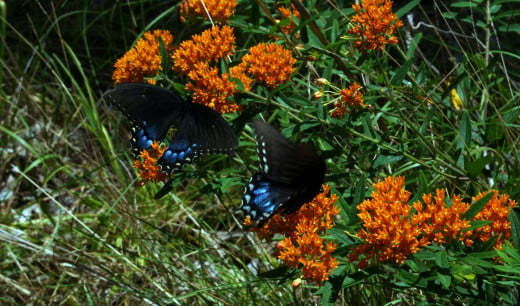
Butterfly Weed
Butterfly Weed doesn’t deserve to be called a weed. It’s showy, orange flowers deserve to be in one’s garden. In fact, I have transplanted some of it to my own garden. As a wild plant it seems to thrive in the rocky and sandy soil at the edge of the woods and along the dirt road leading to my house.
Its bright orange blooms really do attract butterflies, and also bees and hummingbirds. Butterfly Weed is in the milkweed family and provides color throughout the summer and into the fall. Native Americans used the plant to aid in pulmonary illnesses. Caution is advised. The roots and sap are toxic if eaten in large quantities.
Pink Lady's Slipper
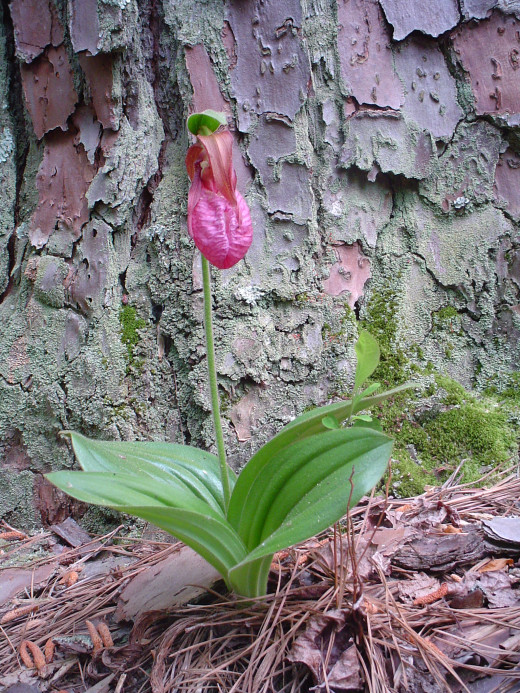
Pink Ladies Slipper
Pink Lady’s Slipper is another of my favorite wild flowers. This perennial wild orchid blooms April through July and can be found throughout North Carolina. It likes an acid soil like that found in the forest, and seems especially fond of pine forests. It prefers partial shade and well-drained soil. You are unlikely to succeed in transplanting the lady slipper, so just enjoy and consider it a gift when you come across them in the woods. The flower is now grown commercially, so you can try purchasing the plants and growing them in your garden. The tiny hairs on the leaves will irritate your skin.
I saw my first Pink Lady’s Slipper while trail riding in Washington County, North Carolina many years ago. More recently I photographed some at DeHart Botanical Gardens in Louisburg, North Carolina.
Queen Anne's Lace
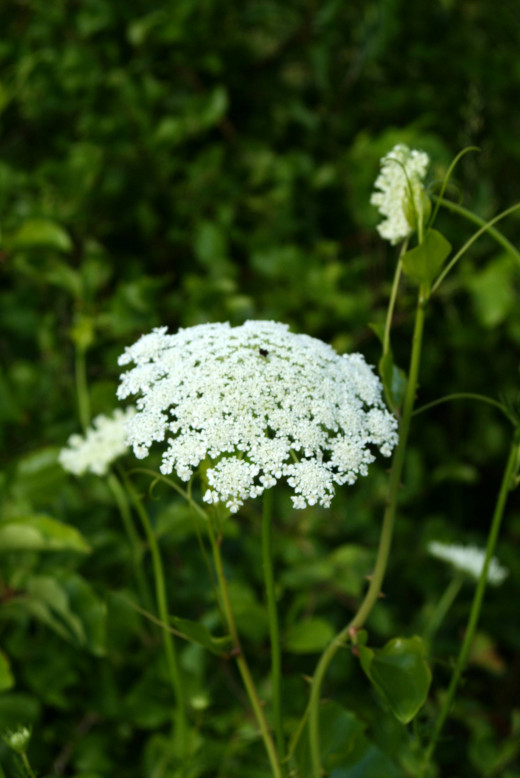
Queen Anne's Lace
Queen Anne’s Lace grows profusely along ditch banks, in fields and along the edge of woods throughout North Carolina. Queen Anne’s Lace is also known as wild carrot. In fact, the carrot on our dinner table was developed from Queen Anne’s Lace. The root is edible but only when very young as it gets woody as it matures. It is not a native to North America; it was introduced by early colonists from Europe who used it as a medicinal herb, as a contraceptive in particular.
I love the lacy flowers, which I often gather for flower arrangements. They are idea for pressing to use in art and craft projects. I remember a science experiment in fifth grade in which we added color to water in a vase of Queen Anne’s Lace and watched it change the color of the flowers, learning how the stems take in water to feed the plant. You can use the same method to dye these flowers and add color to your flower arrangements.
Morning Glory
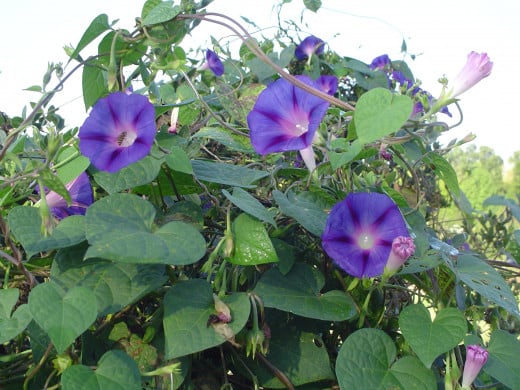
Morning Glory
Morning Glory thrives in full sun. I remember that these showy flowers grew on the fence around our land-lady’s chicken yard when I was a child. I thought they were the prettiest flowers in the yard, much prettier than the cultivated flowers like her prized Camellias.
There are over 500 species of morning glory, which include the sweet potato. The most common in my area has striking blue flowers. Morning glories open in the morning and die by nightfall. They are easy to grow from seed and are pretty growing up a trellis or along a fence. There are commercial seeds available in colors including blue, white, pink, purple and variegated. The beautiful moon flower, with saucer-sized white flowers,is also in the morning glory family. While considered an annual, the morning glory will often self-seed and return the following year.
The heart-shaped leaves are edible, cooked like spinach. The seeds are toxic.
Honeysuckle
Honeysuckleis a vine with very fragrant flowers. I think every southern child has plucked the flowers and sucked out the sweet nectar. The vines grew over the fence between my grandfather’s property and his neighbor’s. I remember once a bee got miffed at me for invading its nest in those vines. I was stung and steered clear of the fence and the flowers for a long time after. There is nothing that speaks of warm summer nights in the South like the smell of honeysuckle flowers. I know it is invasive, but it is still one of my favorite wild flowers.
The plant likes shade for its roots and then it climbs and twines up anything in its way to reach the sun. Some varieties are more shrub than vine. The most common (Japanese Honeysuckle) has a creamy yellow bloom while others are red, orange or pink, one example being the Coral Honeysuckle, which is found primarily in the Piedmont area of North Carolina. The Japanese Honeysuckle was introduced to American in the 1800s from Asia. The seeds of some species are toxic, although others are known for some medicinal properties.
Passion Flower
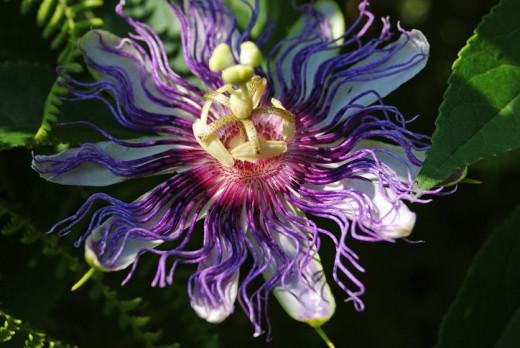
Passion Flower
Passion Flower, also known as Maypop because of its hollow fruit which makes a popping noise if you step on it, has a beautiful purple blossom. The plant is a vine and can be found throughout the state. It is not very picky about where it grows. I have some growing in the sandy and rocky soil where I live, and I have seen it growing near a pond’s edge. It will grow in full sun or partial shade, will tolerate wet or dry conditions.
The fruit is edible. It has seeds surrounded with a juicy pulp similar to pomegranate seeds. The vine’s leaves are said to make a soothing tea that calms the nerves and cures insomnia. This plant is also sold commercially.
© 2014 Donna Campbell Smith










